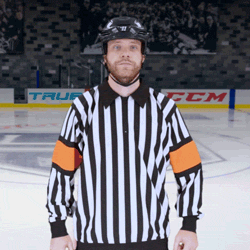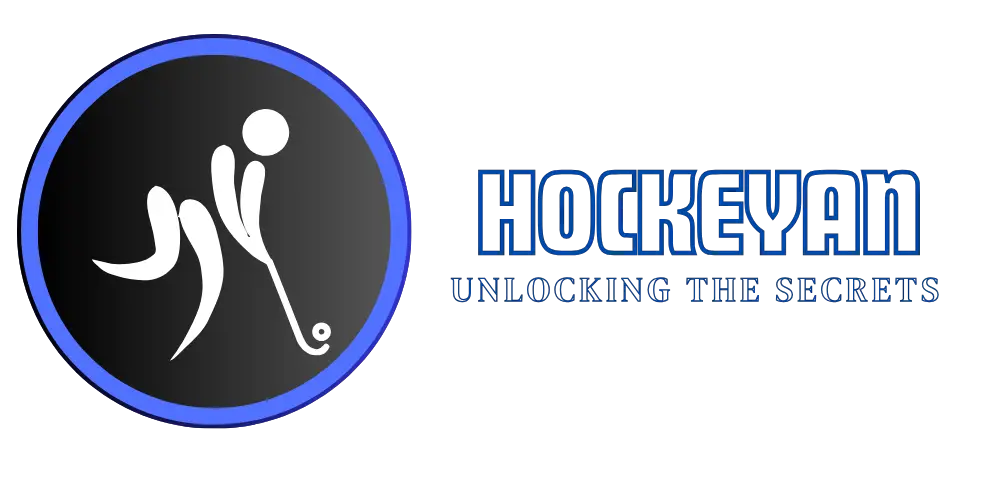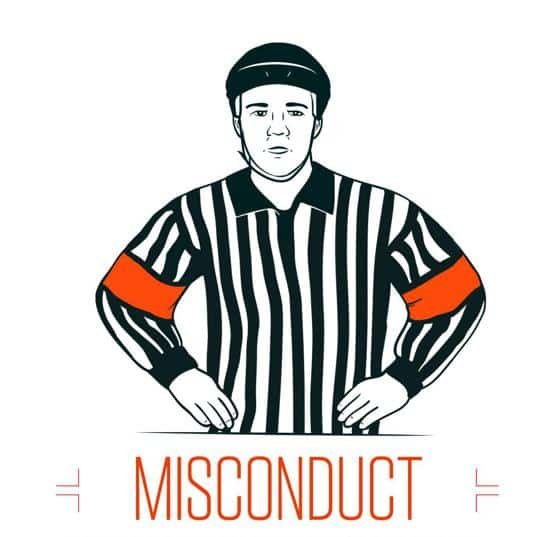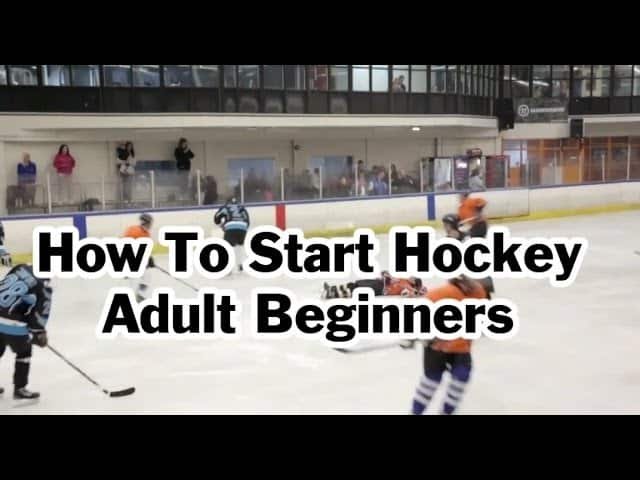Hockey is a thrilling sport filled with fast-paced action. But sometimes, things get out of hand.
Game Misconduct Hockey! Game misconduct in hockey is serious. It involves players being ejected from the game for violent actions or unsportsmanlike behaviour. Understanding what leads to game misconduct can help players and fans alike. It ensures everyone knows the rules and stays safe.
This post will explore the ins and outs of game misconduct in hockey. We’ll discuss what it means, what actions lead to it, and the consequences for players. Stay tuned to grasp this critical aspect of the game better.

Credit: www.hockeymonkey.com
Introduction To Game Misconduct In Hockey
Hockey is a fast-paced and exciting sport. It involves intense physical play. Rules ensure fairness and player safety. One key rule is Game Misconduct.
Definition
Game Misconduct is a serious penalty in hockey. It results in a player being removed from the game. The player cannot return to the ice for the rest of the match.
| Term | Meaning |
|---|---|
| Game Misconduct | Player removed from the game |
The penalty is given for severe actions. These include dangerous hits or unsportsmanlike behavior. The referee has the final say.
Importance
Game Misconduct penalties are crucial for maintaining order. They help keep the game safe and fair. Players are less likely to engage in dangerous acts.
- Ensures player safety
- Maintains game integrity
- Discourages unsportsmanlike conduct
Hockey is exciting, but it can be dangerous. These penalties protect players. They also uphold the spirit of the game.
Types Of Penalties
Penalties in Game Misconduct Hockey can be categorized into two main types: Minor Penalties and Major Penalties.
Minor Penalties
- Minor penalties result in a player sitting out for 2 minutes.
- Common minor penalties include tripping and hooking.
Major Penalties
- Major penalties lead to a player being sidelined for 5 minutes.
- Examples of major penalties are fighting and boarding.
Game Misconduct Penalties
Game Misconduct Penalties are significant in the sport of hockey. These penalties result in a player being ejected from the game. This is due to severe infractions that compromise safety and sportsmanship. Understanding these penalties helps fans and players alike appreciate the rules and the spirit of the game.
Criteria
Game misconduct penalties are issued based on strict criteria. The following are common reasons for receiving these penalties:
- Deliberate injury to an opponent
- Abusive language or gestures
- Repeated unsportsmanlike conduct
- Physical abuse of officials
- Leaving the bench during a fight
These criteria ensure that all players adhere to the highest standards of conduct. Enforcing these rules maintains the integrity of the game.
Examples
Real game situations illustrate these penalties well. Here are some examples:
| Infraction | Example |
|---|---|
| Deliberate Injury | A player uses a stick to hit an opponent’s head. |
| Abusive Language | A player curses at a referee continuously. |
| Unsportsmanlike Conduct | A player taunts others after scoring a goal. |
| Physical Abuse of Officials | A player shoves a referee during a dispute. |
| Leaving the Bench | A player joins a fight from the bench area. |
These examples highlight the seriousness of game misconduct penalties. They serve as reminders for players to maintain discipline and respect.
Consequences Of Game Misconduct
Game misconduct penalties in hockey can have serious consequences. These penalties not only affect the player but also impact the entire team. Understanding these consequences is crucial for players, coaches, and fans.
Player Impact
A game misconduct penalty removes a player from the game. This means the player cannot return to the ice for the rest of the game. Additionally, the player might face further suspensions or fines. Repeated offenses can lead to more severe penalties. The player’s reputation may suffer, affecting future opportunities and team dynamics.
Team Impact
When a player receives a game misconduct penalty, the team suffers. They lose a key player for the rest of the game. This can disrupt team strategy and weaken their performance. The team may need to adjust lines and formations quickly. The penalty also puts pressure on remaining players to fill the gap. It can lead to a disadvantage in crucial moments of the game.
Common Game Misconduct Offenses
In hockey, game misconduct offenses are serious violations. They often lead to a player being removed from the game. These offenses are more severe than minor or major penalties. Understanding these offenses can help fans and players respect the game more.
Violent Behavior
Violent behavior is one of the most common game misconduct offenses. This includes actions like fighting, elbowing, and checking from behind. These actions can cause serious injuries. Referees do not tolerate such behavior. Here are some examples:
- Fighting: Engaging in a physical altercation with another player.
- Elbowing: Using the elbow to hit an opponent.
- Checking from behind: Hitting a player from behind into the boards.
Abusive Language
Abusive language is another common offense. This includes using offensive or insulting words. Such behavior is unacceptable in any sport. It shows a lack of respect for others. Here are some key points:
- Insulting Players: Using derogatory terms against other players.
- Offending Officials: Disrespecting referees and other officials.
- Taunting: Provoking opponents with abusive words.
Both violent behavior and abusive language can lead to severe consequences. Players can be ejected from the game. They may also face additional penalties or suspensions. Respecting the rules ensures a fair and enjoyable game for everyone.

Credit: www.goodreads.com
Referee’s Role
In hockey, the referee’s role is crucial. They ensure fair play and safety. Their presence maintains order on the ice. The referee makes split-second decisions. This keeps the game flowing smoothly. The referee also enforces the rules. Their actions impact the game’s outcome and integrity.
Decision Making
The referee’s decision-making ability is vital. They call penalties and determine goals. Each decision affects the game’s momentum. Quick thinking is essential. Referees must stay alert and focused. They observe players’ actions closely. This helps in making accurate calls. Referees rely on their experience and training. They must remain impartial at all times. Their decisions must be fair and just.
Enforcement
Enforcement is another key duty of a referee. They uphold the rules of hockey. Violations are met with penalties. This ensures players follow the rules. Penalties can vary in severity. Minor infractions lead to short penalties. Serious offenses result in harsher penalties. Referees must communicate these penalties clearly. This helps players understand the consequences. Consistent enforcement maintains game integrity. It also ensures player safety.
Appeal Process
In the world of Game Misconduct Hockey, players may face penalties. Sometimes, these penalties seem unfair. The appeal process helps ensure fairness. It allows players to challenge decisions. Here’s how the process works.
Filing An Appeal
To start, a player must file an appeal. This should be done promptly. A written statement is required. The statement should explain why the penalty is unjust. Include all relevant details. Forms are available online.
| Step | Description |
|---|---|
| 1 | Complete the appeal form |
| 2 | Attach supporting documents |
| 3 | Submit to the review board |
Review Procedure
Once the appeal is filed, the review procedure begins. A committee examines the case. They look at all the evidence. This includes game footage and reports. The committee may call witnesses.
- Review the appeal form
- Examine game footage
- Interview witnesses if necessary
The committee meets to discuss the case. They make a decision based on facts. Their goal is to ensure justice. The final decision is communicated to the player.
- Committee reviews evidence
- Decision is made
- Player is informed
Historical Changes In Rules
The rules of hockey have changed over the years. These changes keep the game fair and exciting. Understanding these changes gives fans a deeper appreciation of the sport. Let’s look at how rules have evolved and some key amendments made over time.
Rule Evolution
Hockey rules have evolved to improve gameplay and safety. In the early years, rules were simple. The first organized game in 1875 had minimal regulations. Players used any stick they found and a ball or a wooden puck.
By the early 1900s, the rules began to standardize. The introduction of the forward pass in 1929 changed the game. It allowed for more strategic plays. The offside rule also saw changes. Initially, it restricted forward passes but was later relaxed.
Key Amendments
Several key amendments shaped modern hockey. These rules ensure fair play and player safety. Here are some notable changes:
- Offside Rule (1930s): The center red line was added to reduce offside calls.
- Helmet Requirement (1979): Helmets became mandatory for all players.
- Goalie Masks (1959): Goalie Jacques Plante wore the first mask after an injury.
- Two-Line Pass Rule (2005): The removal of this rule allowed for faster play.
These amendments have significantly impacted the game. The helmet requirement reduced head injuries. The goalie mask became standard equipment. Removing the two-line pass rule made the game more dynamic.
Each amendment aimed to improve the sport. Safety and fairness are always priorities. The changes reflect hockey’s growth and adaptation over time.
Famous Game Misconduct Incidents
Game misconduct incidents in hockey often captivate fans and make headlines. These moments can change the course of a game and impact players’ reputations. Let’s delve into some of the most famous game misconduct incidents in hockey history.
Notable Cases
One of the most infamous cases was the Marty McSorley incident. In 2000, McSorley struck Donald Brashear with his stick. This led to a severe concussion for Brashear and a heavy suspension for McSorley.
Another notable incident involved Todd Bertuzzi. In 2004, Bertuzzi attacked Steve Moore from behind, causing severe injuries. This resulted in a suspension that lasted 17 months and a significant legal battle.
Chris Simon’s 2007 incident is also memorable. Simon stomped on Jarkko Ruutu’s leg with his skate. This violent act led to a 30-game suspension, one of the longest in NHL history.
Impact On The Sport
These incidents often lead to stricter rules and penalties. The McSorley incident, for example, prompted the NHL to enforce harsher punishments for dangerous stick use.
Bertuzzi’s attack on Moore led to increased discussions on player safety. The NHL implemented more stringent rules on hits from behind and blindside hits.
Chris Simon’s suspension highlighted the need for addressing on-ice violence. The NHL has since taken steps to minimize such dangerous behaviors.
Game misconduct incidents can tarnish players’ careers. They also bring attention to the sport’s need for safety and fair play. These famous cases remind us of the thin line between competitive spirit and reckless aggression.

Credit: www.amazon.com
Preventing Game Misconduct
Preventing game misconduct in hockey is crucial for ensuring a fair and enjoyable experience for players, coaches, and fans. Game misconduct can tarnish the spirit of the sport and create unnecessary conflicts. Implementing effective strategies such as training and awareness programs can significantly reduce these incidents and promote a positive environment on and off the ice.
Training
Proper training is essential to prevent game misconduct in hockey. Coaches should focus on teaching players the rules and regulations from a young age. This includes understanding what constitutes misconduct and the potential consequences.
- Skill Development: Emphasize skill development to reduce frustration.
- Discipline: Instill discipline through consistent practice and reinforcement.
- Respect: Teach players to respect opponents, referees, and the game.
Regular training sessions should include role-playing scenarios. These can help players understand how to handle high-pressure situations without resorting to misconduct.
Awareness Programs
Awareness programs play a vital role in preventing game misconduct. These programs can be designed for players, coaches, and even parents. They aim to educate everyone involved about the importance of maintaining a positive attitude during games.
Consider implementing the following initiatives:
- Workshops: Conduct workshops focusing on sportsmanship and the impact of misconduct.
- Guest Speakers: Invite former players or referees to share their experiences.
- Community Outreach: Engage with the community to promote fair play values.
Awareness programs can include visual aids like posters and videos. These materials can reinforce the message and keep the importance of good conduct top of mind.
Both training and awareness programs are essential tools in preventing game misconduct. By focusing on these areas, the hockey community can create a more respectful and enjoyable environment for everyone involved.
Frequently Asked Questions
What Is A Game Misconduct In Hockey?
A game misconduct in hockey results in a player’s ejection. It is given for severe infractions. The player must leave the game immediately.
How Does A Game Misconduct Affect A Team?
A game misconduct affects a team by reducing its player count. The team cannot replace the ejected player during the game.
Can A Player Return After A Game Misconduct?
No, a player cannot return after a game misconduct. They are ejected for the remainder of the game.
What Infractions Lead To A Game Misconduct?
Infractions like fighting, abuse of officials, or dangerous play can lead to a game misconduct. These are considered serious violations.
Conclusion
Understanding game misconduct in hockey is crucial for all players. It keeps the game fair and safe. Following rules can prevent serious penalties. Always play with respect and integrity. This ensures a positive experience for everyone. Keep these guidelines in mind next time you hit the ice.
Play smart, stay disciplined, and enjoy the game.




